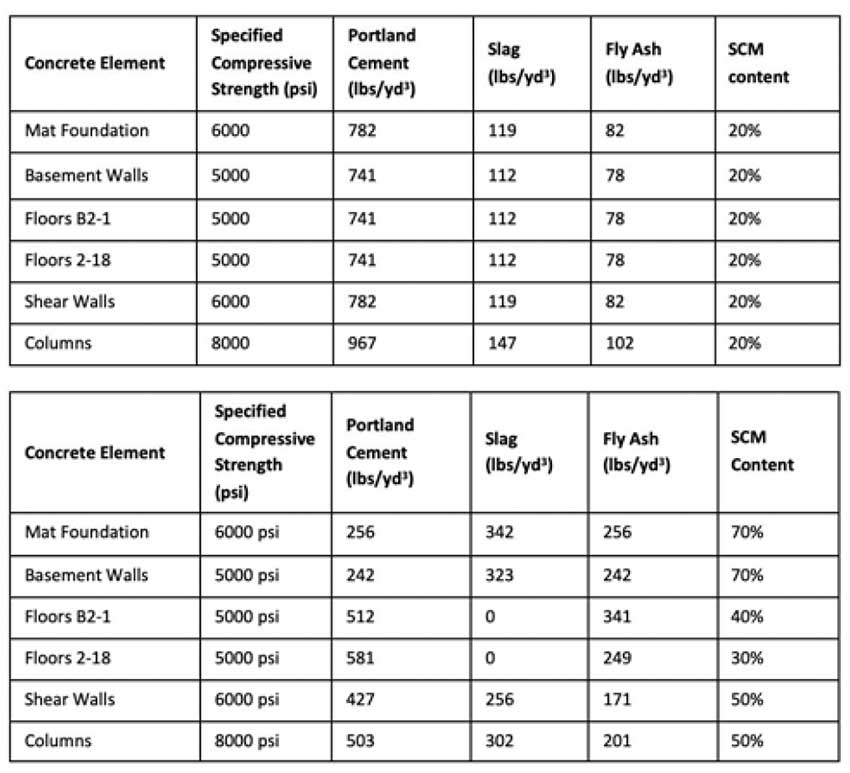Concrete Impacts
 1 AIA LU/HSW; 1 IDCEC CEU/HSW; 1 GBCI CE Hour; 0.1 ICC CEU; 0.1 IACET CEU*; 1 AIBD P-CE; AAA 1 Structured Learning Hour; This course can be self-reported to the AANB, as per their CE Guidelines; AAPEI 1 Structured Learning Hour; This course can be self-reported to the AIBC, as per their CE Guidelines.; MAA 1 Structured Learning Hour; This course can be self-reported to the NLAA.; This course can be self-reported to the NSAA; NWTAA 1 Structured Learning Hour; OAA 1 Learning Hour; SAA 1 Hour of Core Learning
1 AIA LU/HSW; 1 IDCEC CEU/HSW; 1 GBCI CE Hour; 0.1 ICC CEU; 0.1 IACET CEU*; 1 AIBD P-CE; AAA 1 Structured Learning Hour; This course can be self-reported to the AANB, as per their CE Guidelines; AAPEI 1 Structured Learning Hour; This course can be self-reported to the AIBC, as per their CE Guidelines.; MAA 1 Structured Learning Hour; This course can be self-reported to the NLAA.; This course can be self-reported to the NSAA; NWTAA 1 Structured Learning Hour; OAA 1 Learning Hour; SAA 1 Hour of Core Learning
Learning Objectives:
- Recognize how concrete can reduce the life-cycle impacts of a building.
- Define life-cycle assessment (LCA) and explain how it can be used to help measure and reduce the environmental impacts of a building.
- Discuss how LCA is used in the green building standards.
- Describe an example of how LCA software tools can be used to reduce the environmental impact of a building, including carbon footprint,0920026003 GBCI
This course is part of the Concrete Academy
Whole-Building LCA in the Green Building Standards
Although whole-building LCA is complex, it has been incorporated into green building codes, standards, and rating systems. To conduct a complete whole-building LCA, one needs life-cycle data for all the significant building materials and products, along with the operational data for the building including energy use, water use, waste production, and so on. However, most of the green building standards specify limited LCAs to measure only the embodied environmental impacts of building products. They rely on other requirements for energy conservation, water use reduction, and other strategies to reduce the environmental impacts of building operations.
These green building codes, standards, and rating systems typically require an LCA comparison between two building designs,―a reference or baseline building, and the proposed building. To comply, the proposed building must achieve a specified minimum reduction in several impact categories compared to the reference building. Green building standards within the U.S. that have adopted LCA include LEED v4, Green Globes, International Green Construction Code (IgCC), ASHRAE 189.1, and Living Building Challenge.
LEED v4 has a credit called Building Life-Cycle Impact Reduction that awards the project 3 points for conducting a whole-building LCA of the project’s structure and enclosure and can demonstrate a minimum of 10% reduction, compared with a reference building, in at least three of the following six impact categories:
- Global Warming Potential (Required)
- Reduce Ozone Depletion
- Land /Water Acidification
- Eutrophication
- Tropospheric Ozone
- Nonrenewable Energy
Recent Large-Scale LCA Research on U.S. Buildings and Pavements
In a recent study, a team of former and current MIT researchers at the Concrete Sustainability Hub (CSHub) found that emissions of U.S. buildings and pavements could be reduced by around 50% even as the worldwide use of concrete increases. That study, “The role of concrete in life-cycle greenhouse gas emissions of US buildings and pavements,” was published September 2021 in the Proceedings of the National Academy of Sciences (PNAS) and shows how it can be achieved.
This extensive analysis of building and pavement sectors illustrates how life-cycle assessment can be done on a grand scale to reduce emissions in concrete. The team analyzed a “projected” and “ambitious” scenario of reduction strategies and system attributes for buildings and pavements over the 34-year analysis period. The study showed that even if concrete was accelerated, emissions for pavements and buildings between 2016 and 2050 could fall by up to 65% and 57%, respectively, enabling the U.S. to attain carbon neutrality by 2050, close to Paris Climate Accords reduction targets. That prediction assumed continuing carbon reduction and energy-efficiency strategies (and strategies were limited to technologies that currently exist) but they have not been adopted on a large scale.
To conduct this study, the team used reference designed intended to represent current and future building and pavement. They collected current stock within the pavement and building sector in detail, factoring in a variety of elements. For future action, they used several scenarios reflecting current trends. Projected scenarios for buildings and pavements featured the gradual introduction of low-carbon concrete strategies including use of recycled content, carbon capture in cement production, and the use of captured carbon to produce aggregates and cure concrete. In a more ambitious scenario, they used the same strategies implemented more aggressively.
Results showed that the majority of GHG emissions from new buildings and pavement would be from operational consumption rather than embodied emissions, and that it would be essential to place these initial impacts in the context of the material’s life cycle.
What the team found was that more than 80% of the total emissions from new buildings and pavements between 2016 and 2050 would derive from their operation, suggesting that ambitious interventions to the electricity grid and other operational emissions can have the greatest impact.
Overall, the MIT team found that as the U.S. continues to use more concrete, the benefits of the material itself (and the modifications made to it) can make climate targets more achievable.
LCATools At Work
Mix designs selected for the reference building (from NRMCA benchmark report): A cradle-to-gate LCA was conducted to determine the embodied impacts of concrete on a building to compare the GWP of a reference building using typical concrete mixes with moderate amounts of SCMs (both fly ash and slag) and a proposed building using concrete mixes with relatively high volumes of fly ash and slag. The building is an 18-story residential tower located in the northeast United States. For illustration purposes, only six different concrete mixes are selected for the project. In reality, a project of this size might have more concrete mixes. Compressive strengths and concrete volumes for each structural element are identified in Figure 9.

A summary of the concretes selected for the reference and proposed building are provided in Tables 1 and 2.











